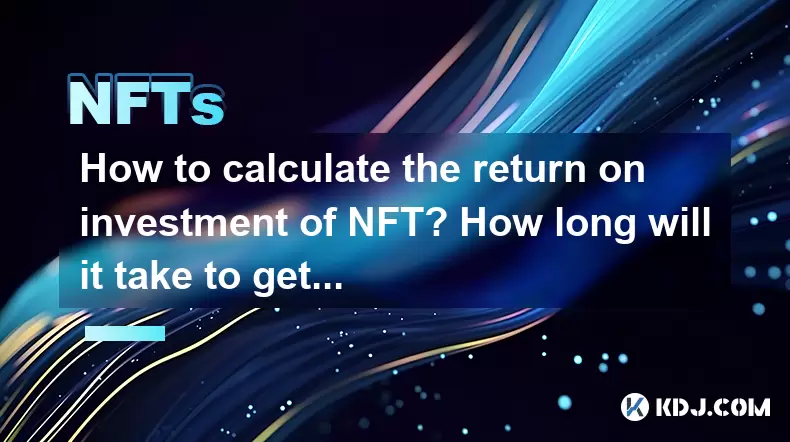-
 Bitcoin
Bitcoin $115200
-2.68% -
 Ethereum
Ethereum $3601
-5.16% -
 XRP
XRP $3.035
-2.96% -
 Tether USDt
Tether USDt $0.9997
-0.04% -
 BNB
BNB $764.5
-5.43% -
 Solana
Solana $168.1
-5.92% -
 USDC
USDC $0.9998
-0.02% -
 Dogecoin
Dogecoin $0.2090
-4.80% -
 TRON
TRON $0.3272
-0.49% -
 Cardano
Cardano $0.7306
-5.00% -
 Hyperliquid
Hyperliquid $39.16
-12.22% -
 Stellar
Stellar $0.3967
-4.96% -
 Sui
Sui $3.566
-5.95% -
 Chainlink
Chainlink $16.55
-6.57% -
 Bitcoin Cash
Bitcoin Cash $552.3
-3.90% -
 Hedera
Hedera $0.2516
-4.69% -
 Avalanche
Avalanche $21.99
-5.75% -
 Toncoin
Toncoin $3.621
-0.28% -
 Ethena USDe
Ethena USDe $1.000
-0.03% -
 UNUS SED LEO
UNUS SED LEO $8.951
0.02% -
 Litecoin
Litecoin $105.9
-3.59% -
 Shiba Inu
Shiba Inu $0.00001232
-5.00% -
 Polkadot
Polkadot $3.640
-5.55% -
 Uniswap
Uniswap $9.048
-7.03% -
 Monero
Monero $301.8
-1.51% -
 Dai
Dai $0.9999
-0.01% -
 Bitget Token
Bitget Token $4.334
-3.66% -
 Pepe
Pepe $0.00001064
-6.17% -
 Cronos
Cronos $0.1367
-5.78% -
 Aave
Aave $259.2
-4.59%
How to calculate the return on investment of NFT? How long will it take to get back the investment?
Calculating NFT ROI involves assessing initial costs, current values, and market trends; use platforms like OpenSea to track and estimate returns.
May 16, 2025 at 05:15 pm

Calculating the return on investment (ROI) of Non-Fungible Tokens (NFTs) involves several steps and considerations. NFTs have become a popular investment vehicle in the cryptocurrency space, and understanding how to measure their performance is crucial for investors. This article will guide you through the process of calculating the ROI of NFTs and estimating the time it takes to recoup your investment.
Understanding ROI in the Context of NFTs
ROI is a performance measure used to evaluate the efficiency of an investment. In the context of NFTs, it helps investors understand the profitability of their NFT holdings. The basic formula for ROI is:
[ \text{ROI} = \frac{\text{Current Value of NFT} - \text{Initial Cost of NFT}}{\text{Initial Cost of NFT}} \times 100 ]
For example, if you purchased an NFT for 1 ETH and its current value is 1.5 ETH, the ROI calculation would be:
[ \text{ROI} = \frac{1.5 \text{ ETH} - 1 \text{ ETH}}{1 \text{ ETH}} \times 100 = 50\% ]
Factors Affecting NFT ROI
Several factors can influence the ROI of an NFT:
- Market Demand: The popularity and demand for the NFT can significantly impact its value.
- Rarity: NFTs that are unique or part of a limited edition often command higher prices.
- Utility: NFTs with additional utility, such as access to exclusive events or digital content, can increase in value.
- Creator's Reputation: NFTs created by well-known artists or brands tend to have higher value.
- Market Trends: The overall trend in the NFT market can affect the value of individual NFTs.
Calculating ROI for Multiple NFTs
If you have invested in multiple NFTs, calculating the overall ROI involves aggregating the values and costs of all your NFTs. Here’s how you can do it:
- Total Initial Cost: Sum up the initial cost of all NFTs.
- Total Current Value: Sum up the current value of all NFTs.
- Overall ROI: Apply the ROI formula to these aggregated values.
For instance, if you bought three NFTs for 1 ETH, 2 ETH, and 3 ETH respectively, and their current values are 1.2 ETH, 2.5 ETH, and 3.8 ETH, the overall ROI calculation would be:
[ \text{Total Initial Cost} = 1 \text{ ETH} + 2 \text{ ETH} + 3 \text{ ETH} = 6 \text{ ETH} ]
[ \text{Total Current Value} = 1.2 \text{ ETH} + 2.5 \text{ ETH} + 3.8 \text{ ETH} = 7.5 \text{ ETH} ]
[ \text{Overall ROI} = \frac{7.5 \text{ ETH} - 6 \text{ ETH}}{6 \text{ ETH}} \times 100 = 25\% ]
Estimating the Time to Recoup Investment
Estimating the time it takes to recoup your investment in NFTs involves predicting future value changes, which can be challenging due to the volatile nature of the NFT market. However, you can use historical data and market trends to make an educated guess.
- Historical Data: Analyze the past performance of similar NFTs to estimate potential future growth.
- Market Trends: Keep an eye on the overall trends in the NFT market to predict potential value changes.
- Break-Even Point: Calculate the point at which the NFT's value equals your initial investment.
For example, if you bought an NFT for 1 ETH and it grows at an average rate of 10% per month, you can estimate the time to break even as follows:
[ \text{Months to Break Even} = \frac{\ln(\frac{1 \text{ ETH}}{1 \text{ ETH}})}{\ln(1 + 0.10)} = 0 \text{ months} ]
However, if you want to achieve a 20% ROI, the calculation would be:
[ \text{Months to 20% ROI} = \frac{\ln(\frac{1.2 \text{ ETH}}{1 \text{ ETH}})}{\ln(1 + 0.10)} \approx 1.8 \text{ months} ]
Practical Steps to Calculate NFT ROI
To calculate the ROI of your NFTs, follow these steps:
- Determine the Initial Cost: Record the price you paid for each NFT.
- Track the Current Value: Regularly check the current market value of your NFTs on platforms like OpenSea or Rarible.
- Calculate ROI: Use the ROI formula to determine the return on each NFT.
- Aggregate Values: If you have multiple NFTs, aggregate their values and costs to calculate the overall ROI.
- Monitor Market Trends: Keep an eye on market trends to estimate future value changes and the time to recoup your investment.
Tools and Platforms for NFT Valuation
Several tools and platforms can help you track the value of your NFTs and calculate ROI:
- OpenSea: A popular marketplace for buying, selling, and tracking NFTs.
- Rarible: Another platform where you can list and track the value of your NFTs.
- NFTGo: A tool that provides detailed analytics and valuation data for NFTs.
- CryptoSlam: Offers real-time data on NFT sales and market trends.
Using these platforms, you can easily monitor the value of your NFTs and calculate your ROI.
Frequently Asked Questions
Q: Can the ROI of an NFT be negative?
A: Yes, the ROI of an NFT can be negative if its current value is less than the initial cost. This can happen if the market demand for the NFT decreases or if the overall NFT market experiences a downturn.
Q: How often should I calculate the ROI of my NFTs?
A: It's a good practice to calculate the ROI of your NFTs regularly, such as monthly or quarterly, to keep track of their performance and make informed decisions about holding or selling.
Q: Are there any fees associated with buying and selling NFTs that should be considered in ROI calculations?
A: Yes, when calculating ROI, you should consider transaction fees, gas fees, and marketplace fees, as these can impact the overall profitability of your NFT investments.
Q: Can the utility of an NFT affect its ROI?
A: Yes, NFTs with additional utility, such as access to exclusive events or digital content, can potentially increase in value, thereby positively affecting their ROI.
Disclaimer:info@kdj.com
The information provided is not trading advice. kdj.com does not assume any responsibility for any investments made based on the information provided in this article. Cryptocurrencies are highly volatile and it is highly recommended that you invest with caution after thorough research!
If you believe that the content used on this website infringes your copyright, please contact us immediately (info@kdj.com) and we will delete it promptly.
- Cardano Price, Pi Network, and Crypto Presales: What's the Buzz?
- 2025-08-02 08:50:12
- XRP Fund Success: Teucrium CEO Reveals Trillions on the Horizon
- 2025-08-02 09:10:12
- Challenge Coins: More Than Just Collectibles – A Military Tradition
- 2025-08-02 08:30:12
- Under the Radar: Hunting for 100x Crypto Gems in a Pi Network World
- 2025-08-02 08:30:12
- Bitcoin, Solana, and Altcoin Season: What's Hot and What's Not?
- 2025-08-02 07:10:12
- Toncoin, Rollblock, and the Token Offering Landscape: A New York Minute
- 2025-08-02 07:10:12
Related knowledge

Is it possible to get a refund on an NFT?
Jul 21,2025 at 08:35pm
Understanding NFT Transactions and RefundsWhen you purchase an NFT (Non-Fungible Token), the transaction is typically recorded on a blockchain, making...

What happens to NFTs when the owner dies?
Jul 22,2025 at 02:43pm
Legal Ownership and Digital AssetsWhen an individual owns NFTs, the question of what happens to these assets upon their death is a pressing one. NFTs ...

What are the tax implications of gifting an NFT?
Jul 19,2025 at 04:21am
Understanding the Basics of NFT GiftingGifting a Non-Fungible Token (NFT) involves transferring ownership from one individual to another without recei...

Can you trade NFTs on your phone?
Jul 18,2025 at 04:29am
Trading NFTs on Mobile DevicesYes, you can trade NFTs on your phone, and the process has become increasingly streamlined thanks to a variety of mobile...

How to find out about upcoming NFT mints?
Jul 18,2025 at 11:50am
Exploring NFT Minting OpportunitiesUnderstanding the landscape of upcoming NFT mints is crucial for collectors, investors, and creators who wish to st...

What is an allowlist or whitelist for an NFT mint?
Jul 20,2025 at 07:14pm
Understanding the Concept of an Allowlist for NFT MintingAn allowlist, also commonly referred to as a whitelist, is a mechanism used in the NFT mintin...

Is it possible to get a refund on an NFT?
Jul 21,2025 at 08:35pm
Understanding NFT Transactions and RefundsWhen you purchase an NFT (Non-Fungible Token), the transaction is typically recorded on a blockchain, making...

What happens to NFTs when the owner dies?
Jul 22,2025 at 02:43pm
Legal Ownership and Digital AssetsWhen an individual owns NFTs, the question of what happens to these assets upon their death is a pressing one. NFTs ...

What are the tax implications of gifting an NFT?
Jul 19,2025 at 04:21am
Understanding the Basics of NFT GiftingGifting a Non-Fungible Token (NFT) involves transferring ownership from one individual to another without recei...

Can you trade NFTs on your phone?
Jul 18,2025 at 04:29am
Trading NFTs on Mobile DevicesYes, you can trade NFTs on your phone, and the process has become increasingly streamlined thanks to a variety of mobile...

How to find out about upcoming NFT mints?
Jul 18,2025 at 11:50am
Exploring NFT Minting OpportunitiesUnderstanding the landscape of upcoming NFT mints is crucial for collectors, investors, and creators who wish to st...

What is an allowlist or whitelist for an NFT mint?
Jul 20,2025 at 07:14pm
Understanding the Concept of an Allowlist for NFT MintingAn allowlist, also commonly referred to as a whitelist, is a mechanism used in the NFT mintin...
See all articles

























































































